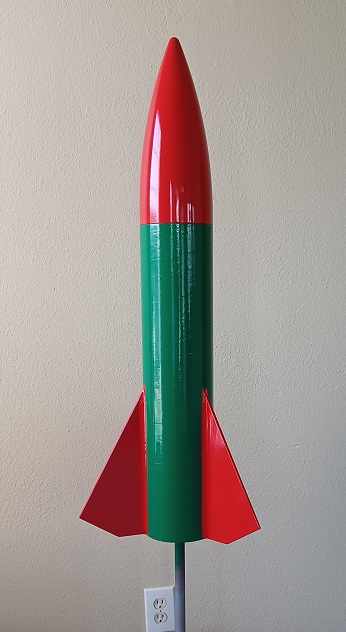I just finished painting my Minnie-Magg I built for my L1 attempt. The local club president recommended the Minnie-Magg, and after finding this Forum and reading, this seems like a good choice. The only deviation from the included instructions was to put about 7 ounces of weight in the nose cone. The advice I was given was that the rocket would fly without weight, but most club members put 4-8 ounces in the nose, so I put in 6 ounces plus the weight of the hardware to keep it in place.
I'm ready for final assembly, but have two questions. I tried doing forum searches, but got such varied results, that I figured I'd ask the questions directly. First, I am using a Jolly Logic AltimeterTwo. I planned to drill ahole in the tube just below the bottom of the nose cone shoulder, inline with the launch lugs. What size hole do I drill? Is 3/32" enough? Or do I need larger?
Second, the instructions say to loop the shock cord through the nose cone and secure to itself with the provided quick link, then attach the parachute to the quick link. Is this the best way to attach the parachute, or is there a better method of attachment?
I plan to convert the nosecone to an electronics bay later, but for the L1 attempt I want to keep things as simple as possible.
Thanks,
Mark
I'm ready for final assembly, but have two questions. I tried doing forum searches, but got such varied results, that I figured I'd ask the questions directly. First, I am using a Jolly Logic AltimeterTwo. I planned to drill ahole in the tube just below the bottom of the nose cone shoulder, inline with the launch lugs. What size hole do I drill? Is 3/32" enough? Or do I need larger?
Second, the instructions say to loop the shock cord through the nose cone and secure to itself with the provided quick link, then attach the parachute to the quick link. Is this the best way to attach the parachute, or is there a better method of attachment?
I plan to convert the nosecone to an electronics bay later, but for the L1 attempt I want to keep things as simple as possible.
Thanks,
Mark





 [/url
[/url